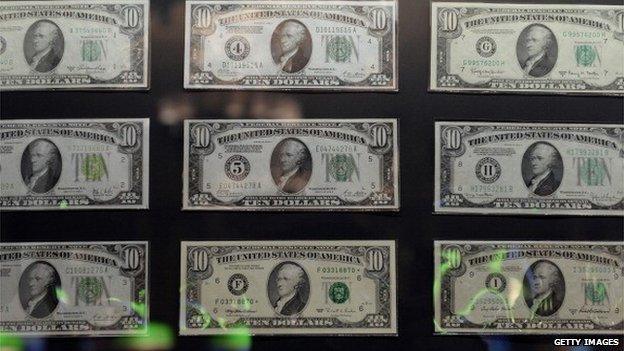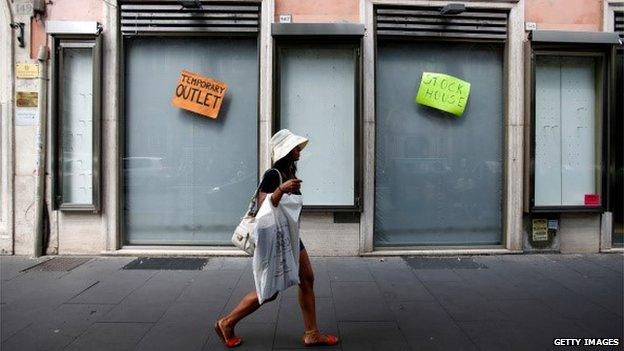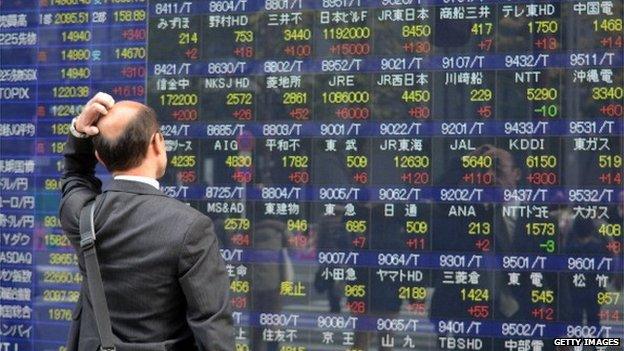Why a rise in US interest rates is still risky
- Published
- comments

There was never going to be a risk-free, stress-free moment for the Fed, the US central bank, to increase the interest rate it controls, after almost seven years of the Fed Funds rate being at a historic low of more-or-less zero.
But just possibly the mooted date of September for the last showing of that US blockbuster, "Free Money to Ward off Depression", would be the least apposite timing possible - for the rest of the world (apart perhaps for Britain, as it happens), and for emerging markets in particular.
And please don't yawn and say that emerging markets are of no interest or relevance to you: they represent half of the global economy; they have for years contributed four fifths of the world's growth, and been the motor of prosperity everywhere; our financial system is intimately connected to theirs.
So why does the US official interest rate matter so much?
Well, it is the world's most important interest rate, the global benchmark, which conditions just about all other interest rates - because the US remains the world's biggest economy, and the dollar remains the world's most important currency.
To put it another way, when the US cuts interest rates, for the world as a whole money becomes cheaper. And when it raises them, well you know what happens.

Eurozone recovery has been lacklustre
Connected economies
Just one illustration of the emerging market thigh bone being connected to America's knee bone has been given by the Bank of England, which recently pointed out that businesses in developing countries have "issued a large volume of US dollar-denominated debt" - so expectations of US rate rises, which have contributed to a sharp strengthening in the dollar, may "pose a threat to the ability of these businesses to meet their obligations".
Or to put it another way, a rise in US interest rates that reflects the robustness of US companies could sink a good few companies elsewhere in the world.
But the Fed's primary responsibility is not what happens in emerging markets: it is to curb inflationary expectations and sustain growth in the US. And because the American economy is looking almost normal again - after that great financial crash of 2008 that is beginning, at last, to feel like history - the Fed wants to get on with raising rates.
Household and corporate indebtedness has been cut. Growth has returned. Unemployment is more-or-less back to normal levels.
To be clear, the Fed doesn't want to raise them by more than a fraction. It recognises that confidence remains fragile. But it feels it needs to get rates up sooner rather than later - not least because (and here's a not very funny joke) if it can't get them up, it won't have much in the way of balm or medicine to apply the next time there's a crash (if rates are zero, cutting them is - well - challenging).
So it has been sending out signals that the momentous end of the era of nil rates could come next month - even though for most of the rest of the world this could be a highly inconvenient moment (to put it mildly).
And the point is that even a fractional rise in US rates would be uncomfortable when the huge economies of China, Japan and the eurozone have been weakening.
For example, the recovery in the eurozone has been desperately disappointing, in spite of all the free money being chucked at it by the European Central Bank via its belated conversion to quantitative easing.
As we saw on Friday, in the second quarter of this year, growth there actually slowed from 0.4% to 0.3% compared with the previous three months - and the annual rate of expansion is an anaemic 1.2%.
As a poignant measure of how bad it is, growth in Greece was actually faster than the eurozone average (though - of course - Greece is now thought to be contracting again, as a result of its banking crisis).
In the eurozone's second biggest economy, France, there was no growth at all; Italy slowed down again; Germany quarterly growth was only 0.4%.
So far so dismal (though strikingly the erstwhile basket cases of Ireland and Spain are going gangbusters).

Japan's economy contracted in the three months to June
Asia's fragility
As for Asia, conditions there feel just as fragile, perhaps more.
Today we had confirmation that the economy of Japan - still the world's third largest (unless you count the lacklustre eurozone as a single homogeneous economy) - contracted in the three months to the end of June, and at an annualised rate of 1.6%.
But as you know (you really do) more important is the slowdown of China and the weakening of its currency, the RMB.
Many economists believe China's official 7% growth rate is a serious overstatement of the underlying reality. And they felt their gloom was corroborated by last week's shocking devaluation of the RMB - which was an attempt by the Chinese authorities to stimulate exports, but which has the unfortunate consequence of exporting deflation to the rest of the world.
For the avoidance of doubt, what's happening in China is the big event. It is odd, in a way, that I need to make that explicit, given that no one surely disputes that the rise and rise of China since 1978 was the most important economic phenomenon of our age.
One manifestation of the pronounced deceleration in Chinese growth has been the persistent falls in commodity and energy prices - since it was China's appetite for raw materials and power which for decades drove up these prices.
So let's pull the threads together: the commodity and energy cycle has turned down; China is slowing; the dollar is rising on expectations of rising interest rates.
For much of Asia, Africa and South America, this combination is little short of disastrous. And it is not surprising that emerging market currencies - from Malaysia to Turkey, via Thailand and the Philippines - are falling sharply.
Cheap capital is fleeing these places for the higher yields (rates of return) anticipated in America. Demand for what they extract from the earth and beneath the sea is falling. The cost of servicing their dollar-denominated debts is rising.
What can be done?
Well the European Central Bank and the People's Bank of China will be contemplating measures to cheapen the cost of debt yet more in the eurozone and China respectively. There is a decent prospect of more monetary easing in both regions before the Federal Reserve makes its interest rate decision in the middle of September.
But there would be a risk to such evasive action, which is that it would exacerbate so-called global imbalances - by pinning recovery on exports generated by a sliding currency - and inflate these imbalances perhaps back to the dangerous levels that took us to the 2008 debacle.
The surpluses of producing economies, China and the eurozone/Germany would be magnified. The deficits of consuming economies, like ours and the US, would rise correspondingly.
If big unsustainable debts remains the counter-weight to a sustainable improvement in prosperity in rich consuming economies like Britain, then it is no blinkin' use to us if China and the eurozone slash their prices to encourage us to buy more of their stuff and live even further beyond our means.
So if the ECB and People's Bank slash the price of money, that would be yet another temporary solution - a drug that would generate a short-term high and (potentially) a painful hangover for all over us.